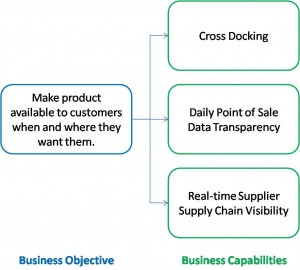A CIO Can’t Do More with Less
post by Chris Curran on May 12, 2009Yes, I realize that “doing more with less” is a saying that is used to encapsulate the increased pressure on the enterprise, and the IT function specifically, to keep the business running with less revenue coming in and lower budgets. But, it bugs me because I think the saying propagates the myths that somehow IT can squeeze even more blood out of the stone, in the same environment in which the business is dissatisfied with IT support, projects continue to be delivered at low success rates, etc.
Hopefully, the early signals from Cisco and others are accurate and we will see the spending pressures release somewhat. That said, what can a CIO and her leadership teams do to optimize its investments?
You would be surprised how much head-scratching goes on when organizations try to decide which projects do or don’t make sense. In many cases, it just boils down to which executive sponsor yells the loudest - literally. There is a better way - make sure that all IT investments can be tracked back to one or more specific business objectives and more detailed capabilities.
Here’s how:
Drive High-level Business Objectives into their Corresponding Business Capabilities
This is the hardest part because it requires not only an initial exercise but a systematic approach to keep it current. In our practice at PwC, we recommend enterprise architecture as the function to own the business objective to business capability mapping as well as the subsequent links to the underlying systems and infrastructure. As an example (detailed here), let’s look at Wal-Mart. They have a relentless focus on the customer, which translates into an objective to always have product on-hand. But this objective does not stand alone - it is supported by several business capabilities, that are in turn, enabled by information technology.

Attach Business Capabilities to Projects in the Portfolio Management Process
Many organizations do their formal project approvals once a year, in the beautifully productive time known as “annual planning.” In our 2009 Digital IQ study, we found that on average, companies spend over 2.5 man years on this - clearly an area for some re-engineering.
This is a start, but not sufficient because as quickly as things change, the entropy of the organization will tend to forgo the rigorous business capabilities mapping. But it is worth integrating directly into the process in which projects are defined and approved for two reasons. First, it will improve the percentage of projects and dollars aligned with the business needs. Second, it will allow you to directly attribute IT effort to business value (see #3).
Show IT’s Value by Tracking Delivery of Business Capabilities
One of our healthcare clients calls a report they produce, their “under the hood dashboard.” It’s a great report that tracks IT’s delivery of the business capabilities month-to-month and quarter-to-quarter. It uses business language and terms defined by the business - terms like those used in the Wal-Mart example. It has an unfortunate name since us IT-types would like to be thought of as more than mechanics, but it will do because it represents a simple and direct way to show what IT is working on and that it directly contributes to moving the business toward its goals.
No matter what the economic climate is, as IT leaders we should always look for ways to maximize value for investments we make and I believe that these 3 steps are a great start. Because I don’t think “Doing More with Less” sends the right message, I am hereby re-writing the old saying to “Do the Best with Less.”




Pingback: Conversation comments around the WWW « A Bottom's Up View From a Pai Mei (白眉) Guy()
Pingback: Top 5 CIO Tweets of the Week - August 14, 2009 — CIO Dashboard()